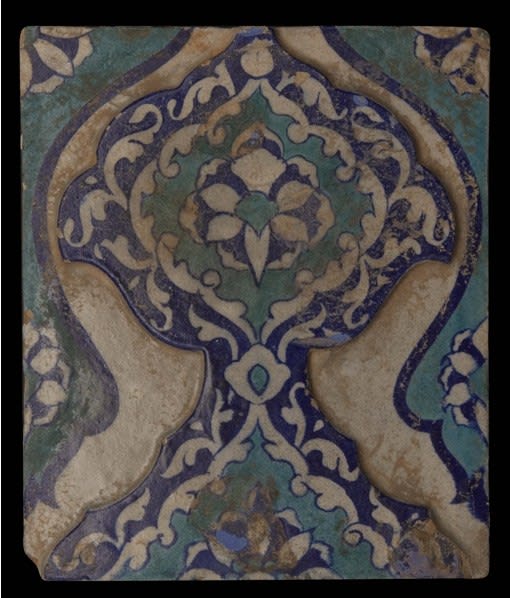Islamic Glazed Tile, 16th Century CE - 17th Century CE
Glazed Earthenware
11 x 13
JB.1215
Glazed tile of rectangular form, the light and dark blue decoration comprising a raised part “scepter” head motif containing a floral pattern. The first major development in the art of...
Glazed tile of rectangular form, the light and dark blue decoration comprising a raised part “scepter” head motif containing a floral pattern.
The first major development in the art of Islamic tile-making occurred primarily in Anatolian Seljuk architecture. Mosques, mescits (small mosques) and minarets, were decorated with turquoise and purple and reddish glazed brick to produce a variety of geometric compositions and kufic inscriptions. Small mosaic-like pieces of tile were also combined to create certain designs. Glazed brick and tile-work, similar to the decoration found on minarets, is seen on the exteriors of tombs and in the interiors of Seljuk buildings, on brick revetments covering large surfaces, on arches, vaults, walls and on other architectural elements.
Turkish tiles and pottery from the 14th to 19th centuries have won worldwide acclaim due to their wide range of techniques, color schemes and designs.
(JB1215) Tile, rectangular, with polychrome painting; showing a floral design within a lobed and pointed arch.
Syria, Damascus, 16th – 17th century.
Geza Fehervari
The first major development in the art of Islamic tile-making occurred primarily in Anatolian Seljuk architecture. Mosques, mescits (small mosques) and minarets, were decorated with turquoise and purple and reddish glazed brick to produce a variety of geometric compositions and kufic inscriptions. Small mosaic-like pieces of tile were also combined to create certain designs. Glazed brick and tile-work, similar to the decoration found on minarets, is seen on the exteriors of tombs and in the interiors of Seljuk buildings, on brick revetments covering large surfaces, on arches, vaults, walls and on other architectural elements.
Turkish tiles and pottery from the 14th to 19th centuries have won worldwide acclaim due to their wide range of techniques, color schemes and designs.
(JB1215) Tile, rectangular, with polychrome painting; showing a floral design within a lobed and pointed arch.
Syria, Damascus, 16th – 17th century.
Geza Fehervari
